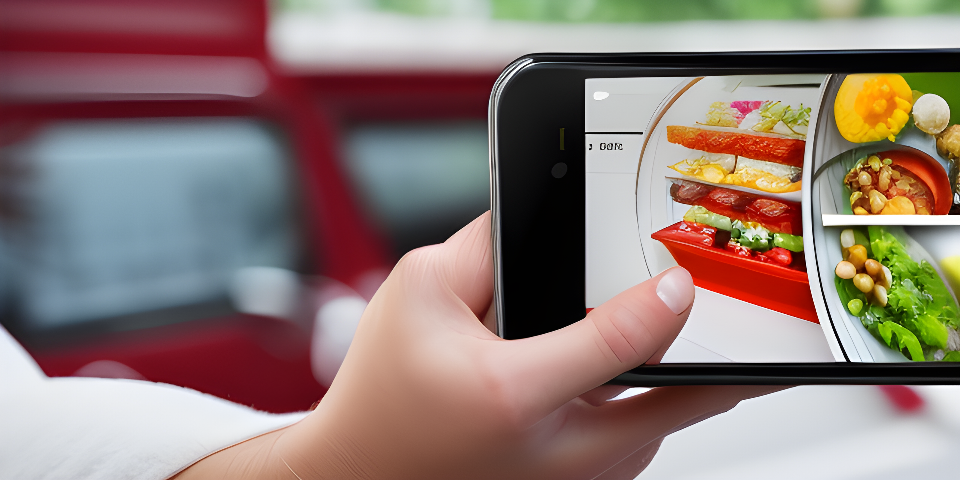Digital Marketing Secrets for Food Delivery Apps: PPC and Organic Magic
Creating a comprehensive digital marketing plan for a food delivery app involves a combination of paid advertising (PPC) and organic strategies to enhance visibility and drive product awareness. Here’s a step-by-step plan that incorporates both aspects:

1. Market Research: Understand your target audience, their preferences, demographics, and behavior. Identify your competitors and analyze their digital marketing strategies to gain insights.
2. Clear Value Proposition: Develop a compelling value proposition that highlights what makes your food delivery app unique and why users should choose it over competitors.
3. PPC (Pay-Per-Click) Strategy: Create a targeted PPC campaign to generate immediate visibility and traffic. Utilize platforms like Google Ads and social media channels for this purpose.
- Keyword Research: Identify relevant keywords related to food delivery, cuisine types, and localities. Use tools like Google Keyword Planner.
- Ad Creation: Craft engaging ad copy and visuals that highlight your app’s benefits. Use clear calls to action (CTAs).
- Geo-Targeting: Focus on specific geographical areas where your app operates to reach the right audience.
- Landing Pages: Create optimized landing pages that match the ad’s content and provide a seamless user experience.
- Budget Management: Set a budget for each campaign and monitor performance regularly to optimize spending.
4. Social Media Marketing: Leverage various social media platforms to connect with your audience and build a strong brand presence.
- Content Strategy: Share engaging content such as food photos, user testimonials, and behind-the-scenes glimpses.
- Influencer Collaborations: Partner with local food influencers to promote your app and reach a wider audience.
- Hashtags: Use relevant and trending hashtags to increase the visibility of your posts.
- Paid Social Ads: Utilize paid ads on platforms like Facebook, Instagram, and Twitter to target specific demographics.
5. Search Engine Optimization (SEO): Optimize your app’s online presence to improve organic visibility on search engines.
- On-Page SEO: Optimize app store listings with relevant keywords, compelling descriptions, and eye-catching visuals.
- Local SEO: Ensure accurate NAP (Name, Address, Phone Number) information for local search optimization.
- Content Creation: Develop high-quality blog posts, infographics, and videos related to food, delivery, and local cuisine to attract organic traffic.
- Backlink Building: Acquire high-quality backlinks from relevant and authoritative sources to boost your app’s authority.
6. App Store Optimization (ASO): Enhance your app’s visibility within app stores (such as the Apple App Store and Google Play Store).
- Keyword Optimization: Incorporate relevant keywords in your app’s title, description, and metadata.
- Compelling Visuals: Use attractive and representative app icons and screenshots to entice users.
- Ratings and Reviews: Encourage satisfied users to leave positive reviews and ratings on the app stores.
7. Email Marketing: Build an email list and send targeted campaigns to keep users engaged and informed.
- Promotional Emails: Share special offers, discounts, and new restaurant partnerships to entice users to order through the app.
- Newsletter: Provide valuable content such as recipes, food trends, and local restaurant spotlights to keep subscribers engaged.
8. Data Analysis and Optimization: Regularly monitor key performance indicators (KPIs) to refine your strategies.
- Conversion Tracking: Use analytics tools to track conversions, clicks, app installations, and engagement.
- A/B Testing: Experiment with different ad copies, visuals, and landing pages to identify what resonates best with your audience.
- Refinement: Continuously optimize campaigns based on data insights to maximize ROI.
9. Feedback and Customer Engagement: Encourage user feedback and respond promptly to reviews, comments, and inquiries.
- Customer Support: Offer excellent customer support through multiple channels, including in-app chat and social media.
- Feedback Integration: Use user feedback to improve app features, usability, and overall customer experience.
10. Partnerships and Collaborations: Collaborate with local restaurants, cafes, and food-related businesses to cross-promote and expand your app’s reach.
By integrating both paid and organic strategies, this digital marketing plan aims to maximize the food delivery app’s visibility, drive product awareness, and ultimately increase app installations. Remember to continuously analyze results, adapt strategies based on performance, and stay attuned to industry trends to ensure long-term success.


